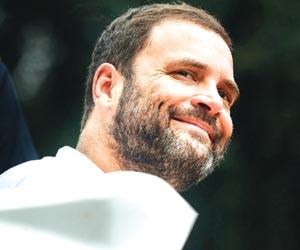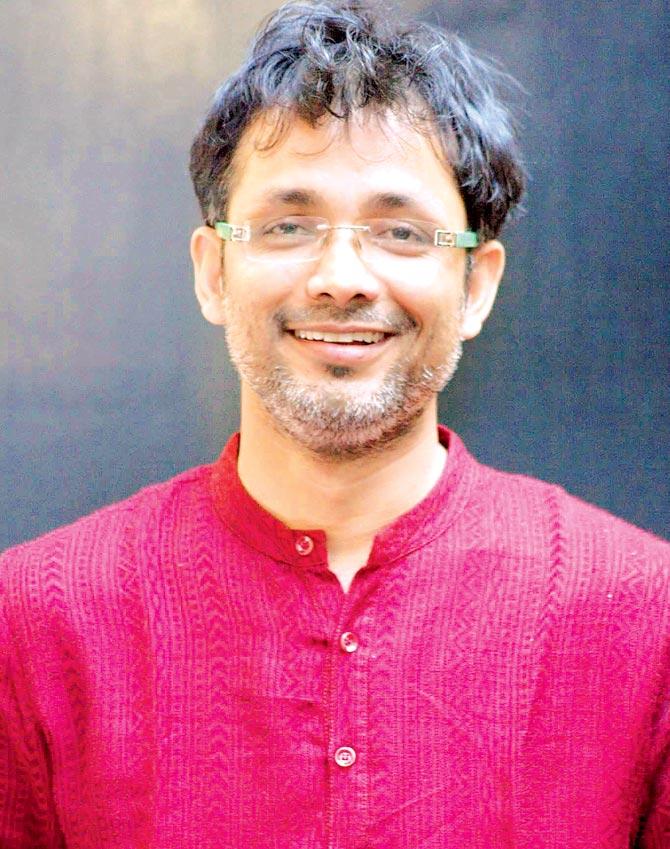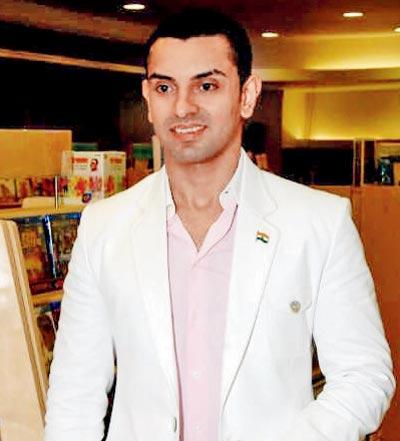An animal-loving, Aikido-practising, witty politician now meets us as Rahul Gandhi. But, will that make him the next PM?

When on October 14 this year, US President Donald Trump tweeted: "Starting to develop a much better relationship with Pakistan and its leaders. I want to thank them for their cooperation on many fronts," one of the most scathing responses this side of the LOC - "Modi ji quick; looks like President Trump needs another hug" - came from @OfficeofRG. The Twitter account of the country's most well-known "Pappu", aka Rahul Gandhi.

Rahul Gandhi
The 47-year-old, fourth-generation scion of the Nehru-Gandhi family, that has headed the Indian National Congress, had until recently been seen as the reluctant politician - having settled for the party's vice-president's post when he could have claimed the leadership role, seeming indecisive in crunch situations and, worse, absent when the party faced a string of electoral defects (in February 2015, he left for a 56-day vacation).
That could very well have been another Gandhi. For, the one who is taking on the Bharatiya Janta Party (BJP), the country's ruling party, and its prime minister Narendra Modi, is sharp and on-point where daily issues are concerned - aside from GST and demonetisation, he has even attacked the BJP's on the Mersal controversy. And, with the Gujarat assembly elections around the corner (December 2017) and the General elections down the road (2019), it's obvious that Gandhi's rising Twitter popularity - his followers have jumped by 1 million in two months - is part of a larger strategy that Congress has put in place, to recover lost ground.
Better late than never
Modi joined Twitter - the microblogging site which has a 140 character limitation on posts -in January 2009, three years after its launch. By then, he was already the chief minister of Gujarat, serving his third term. His first tweet was a fairly banal: "2nd Feb, I will be in Dahod for Gujarat Swarnim Jayanti Yatra". Still, he was one of the early movers. Today, he has 36.2 million followers.

Kumar Manish, social media strategist
Congress supporter Tehseen Poonawalla admits that the delay in amping up its social media game has cost the party. "Pre-2014, the 'Pappu' image was created around him and we weren't there on social media to counter it. The aspect of Gandhi that came to the fore wasn't true," he adds. In July this year, the Congress hired an all-new social media team, headed by Karnataka MP and actor, Divya Spandana aka Ramya, which has been credited with the turnaround.
"One feedback that all of us who support the Congress or are active within the party gave is that there is a large section of young people who are fence sitters, in that they are not yet Congress or BJP supporters. Social media reaches out to these undecided voters. Ahead of the 2014 elections, PM Narendra Modi did reach out to them and it's something we need to do," Poonawalla adds.
Journalist Rajdeep Sardesai, who authored the book, 2014: The Election that Changed India, says that ahead of the general elections that year Modi was "able to use social media to shape the narrative". "Particularly with catchphrases like acche din, he built on the idea that the previous government was corrupt. He pushed this aggressively with himself as the man who would be able to fix it. Mainstream media was looking over its shoulders constantly and bought into the narrative," he adds.
The new, cool neta
It's always the question where celebrities are concerned: "who is doing all the tweeting?" Gandhi floored his audience when he uploaded a 14-second video of his pet Pidi last Sunday with the text: "Ppl been asking who tweets for this guy..I'm coming clean..it's me..Pidi..I'm way [cool emoji] than him. Look what I can do with a tweet..oops..treat!" If you bought into the coolness, then the message has hit home.

Tehseen Poonawalla, Congress supporter
"Twitter junta getting an opportunity to see Gandhi's personal life - be it Aikido or the Pidi tweet - has really made an impact in his Twitter followership and rewteets," says Kumar Manish, social media strategist and independent communications consultant. "He is talking in millennial language along with personal photos and videos. This is a great departure from existing Twitter handles of prominent political personalities, which are now repetitive and have nothing new to offer." Gandhi's Twitter handle, he adds, seems to be greatly inspired by that of former US president Barack Obama. "Obama would pepper his political tweets with his personal life story, be it his daughters or pet dogs. That helped him find a connect."
Congress national spokesperson, Sanjay Jha, says, "We felt that if we look at BJP's tweets, they are banal. There's no attempt to engage [the audience] or have a dialogue. They are just one-sided speeches, mann ki bat, etc. Here, we have introduced a refreshing, self-deprecating personality, a man with wit. We have all wondered, why is Indian politics dull? We felt we need to lighten up."
Gandhi's address at the University of California, Berkeley, in September this year, played a major role in changing the narrative. Gandhi, Jha says, went out there and took questions on the government, himself, how the BJP attacks him and what went horribly wrong in UPA 2. He also touched the issue of dynasty politics. "Basically, he took the bull by the horn." Once on the defensive, the Congress in general and Gandhi in particular are learning how to play a more aggressive game. "He chose this personality on his own, goading the BJP and reflecting a sense of humour that young Indian twitter users want to see," Jha says.
Gandhi's tweets, say both Poonawalla and Jha, reflect the party's core ethics - secularism, liberalism, and opposition to Section 377 and mandates on food habits, etc. "He's a true blue liberal with a model for inclusive growth. He is a very cool likeable politician," says Jha, adding, "And, as you, know cool is hot."
But, what about the bots?
Even as Gandhi's sudden rise in India's collective political consciousness has riled the BJP, there have also been accusations that the meteoric rise in followers may not be organic. There have been allegations that these have been bought by the Congress. Jha denies the allegation outright. "It's very easy for an Opposition party to plant bots and create bots," he says. However, Ankit Lal, social media strategist for the Aam Aadmi Party, says that in an age where buying followers is as easy as hitting Google, an increase in those numbers isn't the issue. The issue is the sudden rise in engagements. For instance, Most of Gandhi's recent tweets get an upward of 15,000 retweets, Modi's register anywhere between 4,500 to 25,000.
Lal, who in an for news website, The Wire, titled 'The Congress and BJP Should Stop Trying to Unlevel the Digital Playing Field' wrote that for a tweet by Gandhi on the Mersal issue, which was retweeted more than 25,000 times, he and a friend analysed the number of followers of 9,948 individual accounts: "There were 2,421 Twitter users among them who had 10 or less followers. This is 24.33% of the sample size. There were 4,112 Twitter users among them who had 30 or less followers. This is 41.33% of the sample size. At the other end, there were 10 users in this dataset who had more than 50,000 followers."
Twitter Vs Facebook
Switching to social media may have been a need-based move for Modi. With the mainstream press having boycotted him after the 2002 Gujarat riots, social media became a tool to reach out to the masses, says Ullekh NP, author of War Room The people, Tactics and Technology Behind Narendra Modi's 2014 Win. Yet, Facebook, not Twitter, he says played a major role.
Facebook has layers and is available in several languages. "In 2014, there were local groups created on the platform where you would post locally relevant stuff. Such groups are useful in areas where the reach of the mainstream media is poor. It's here where a narrative was built and support garnered," he adds. Twitter, he says, remains the platform of the English-speaking crowd. Lal, however, argues that Twitter plays the role of informing Facebook.
"Today, all newsmakers and newspersons are on Twitter. It's here that most get their news from. Twitter takes up five per cent of the social media pyramid while Facebook makes up 15-20 per cent. However, it's the top five per cent that creates news for the larger audience," he adds.
The 2016 US elections have already raised questions of Facebook's possible influence on elections, but we may not have to look West. Lal says, that as per the social network's own reports, "FB affected more than 140 constituencies, being a decisive factor. Similarly in 2019 300+ constituencies will be affected. It's inevitable that any party that wants to stay in the game will have to be in the social media game as well. It's not that ground mobilization can be done away with. But, just as television was a medium of outreach a few years ago, today it's social media."
Not everyone agrees.
Today, Sardesai says, Modi uses Twitter to give himself prime ministerial authority. "His tweets are mostly self-congratulatory messages to create a large-than-life leader image for himself. Whereas in the last few months, the @officeofRG has been sharply political, getting under the skin of the other side." But will that be enough to affect elections? "I have a huge doubt."
 Subscribe today by clicking the link and stay updated with the latest news!" Click here!
Subscribe today by clicking the link and stay updated with the latest news!" Click here!









